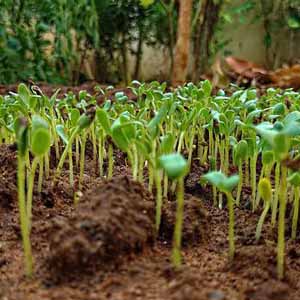 Smart Citations
Smart CitationsSee how this article has been cited at scite.ai
scite shows how a scientific paper has been cited by providing the context of the citation, a classification describing whether it supports, mentions, or contrasts the cited claim, and a label indicating in which section the citation was made.
Glycine betaine enhancing plant growth and antioxidant activity of fenugreek (Trigonella foenum-graecum L.) under salt stress
The effect of an exogenous foliar spray of Glycine Betaine (GB) on vegetative growth and some biochemical aspects of fenugreek (Trigonella foenum-graecum L.) in the presence of salt was studied in a pot experiment. In addition to the control, four GB concentrations (0, 25, 50, and 75 mM) were used under salt concentration, 150 mM NaCl. Salt stress reduced all growth parameters and had a negative impact on photosynthetic pigments, relative water content, and proteins. The foliar spray of GB, on the other hand, raises these parameters, particularly at concentrations of 50 mM. Carbohydrates, total phenolics, flavonoids, and antioxidant activity all increased in response to salt stress compared to controls; additionally, GB foliar spray induced their accumulation. Furthermore, increasing the concentration of GB increased these parameters. GB, more than others, reduces the entry of harmful ions (Na+ and Cl-), while increasing the accumulation of Ca2+ and K+. These findings suggest that foliar spraying with GB can improve fenugreek growth and tolerance under saline conditions.
Downloads
How to Cite

This work is licensed under a Creative Commons Attribution-NonCommercial 4.0 International License.
PAGEPress has chosen to apply the Creative Commons Attribution NonCommercial 4.0 International License (CC BY-NC 4.0) to all manuscripts to be published.

 https://doi.org/10.4081/jbr.2022.10474
https://doi.org/10.4081/jbr.2022.10474





